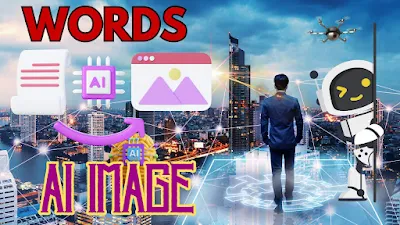The Bing AI Image Creator is an innovative tool developed by Microsoft that utilizes artificial intelligence (AI) algorithms to generate images based on textual descriptions.
Introduction to Bing AI Image Creator
The Bing AI Image Creator is an advanced AI-driven tool designed to bridge the gap between textual descriptions and visual representations. Leveraging state-of-the-art machine learning algorithms, this tool enables users to generate high-quality images based on their input descriptions. It represents a significant advancement in the field of computer vision and natural language processing, offering a seamless way to translate text into compelling visuals.
Understanding the Technology Behind Bing AI Image Creator
At the core of the Bing AI Image Creator lies a sophisticated deep learning model trained on vast datasets of images and corresponding textual descriptions. This model employs advanced techniques such as convolutional neural networks (CNNs) for image analysis and recurrent neural networks (RNNs) for text understanding. Through extensive training on large-scale datasets, the model has learned to map textual descriptions to visual features, enabling it to generate images that accurately reflect the input text.
Workflow of Bing AI Image Creator
The workflow of the Bing AI Image Creator involves several key steps:
1. **Text Input**: The user provides a textual description of the desired image. This description can range from simple phrases to detailed narratives, providing the AI with the necessary information to create the image.
2. **Semantic Understanding**: The AI parses and analyzes the input text to extract semantic meaning and contextual information. It identifies key entities, attributes, and relationships described in the text, forming a comprehensive understanding of the desired image.
3. **Image Generation**: Using the extracted semantic information, the AI generates a visual representation of the described scene. This process involves synthesizing various visual elements, such as objects, scenes, colors, and compositions, to create a cohesive image that aligns with the input description.
4. **Refinement and Optimization**: The generated image may undergo refinement and optimization processes to enhance its quality and coherence. This could involve fine-tuning the visual details, adjusting the layout, or optimizing the overall composition to better match the input description.
5. **Output Delivery**: Once the image generation process is complete, the resulting image is delivered to the user. Depending on the application, the image may be displayed directly within the interface of the Bing AI Image Creator or exported in a specific format for further use.
Key Features and Capabilities
The Bing AI Image Creator offers several key features and capabilities that distinguish it from traditional image generation methods:
1. **Natural Language Understanding**: The AI has the ability to interpret and understand natural language descriptions, allowing users to communicate their image requirements in a human-like manner.
2. **Semantic Image Synthesis**: By leveraging semantic understanding, the AI can synthesize images that accurately reflect the content and context of the input text. This enables the generation of highly relevant and contextually appropriate visuals.
3. **Customization and Control**: Users have the flexibility to customize various aspects of the image generation process, such as specifying visual styles, adjusting parameters, or providing additional guidance to the AI. This empowers users to tailor the generated images to their specific needs and preferences.
4. **Scalability and Efficiency**: The AI-powered approach to image generation offers scalability and efficiency advantages, allowing for the rapid creation of images at scale without compromising quality. This makes the Bing AI Image Creator suitable for a wide range of applications, from creative design to content generation.
Applications of Bing AI Image Creator
The Bing AI Image Creator has diverse applications across various domains:
1. **Content Creation**: Content creators, marketers, and designers can use the Bing AI Image Creator to generate visuals for articles, presentations, social media posts, and other forms of content. By automating the image creation process, they can save time and resources while ensuring visually engaging content.
2. **E-commerce**: Online retailers can utilize the Bing AI Image Creator to generate product images based on textual descriptions. This enables them to showcase products in various settings and contexts, helping customers make informed purchasing decisions.
3. **Education and Training**: Educators and trainers can leverage the Bing AI Image Creator to create visual aids, illustrations, and instructional materials for educational purposes. This facilitates learning and comprehension by providing visual representations of complex concepts and topics.
4. **Entertainment and Gaming**: Game developers, filmmakers, and animators can use the Bing AI Image Creator to generate concept art, storyboards, and visual effects for their projects. This accelerates the creative process and enhances the visual richness of entertainment experiences.
The Bing AI Image Creator represents a groundbreaking advancement in the field of AI-driven image generation. By seamlessly translating textual descriptions into compelling visuals, it offers a powerful tool for content creation, e-commerce, education, entertainment, and various other applications. With its natural language understanding capabilities, semantic image synthesis techniques, and customizable features, the Bing AI Image Creator empowers users to unlock new possibilities in visual communication and storytelling.
Future Developments and Considerations
As AI technologies continue to evolve, we can expect the Bing AI Image Creator to undergo further advancements and refinements. This may include improvements in image quality, expanded language support, enhanced customization options, and integration with other tools and platforms. However, it's also important to consider ethical and privacy implications associated with AI-generated content, such as ensuring transparency, fairness, and responsible usage practices. By addressing these considerations and embracing responsible AI development, we can harness the full potential of tools like the Bing AI Image Creator to drive innovation and creativity in the digital age.

